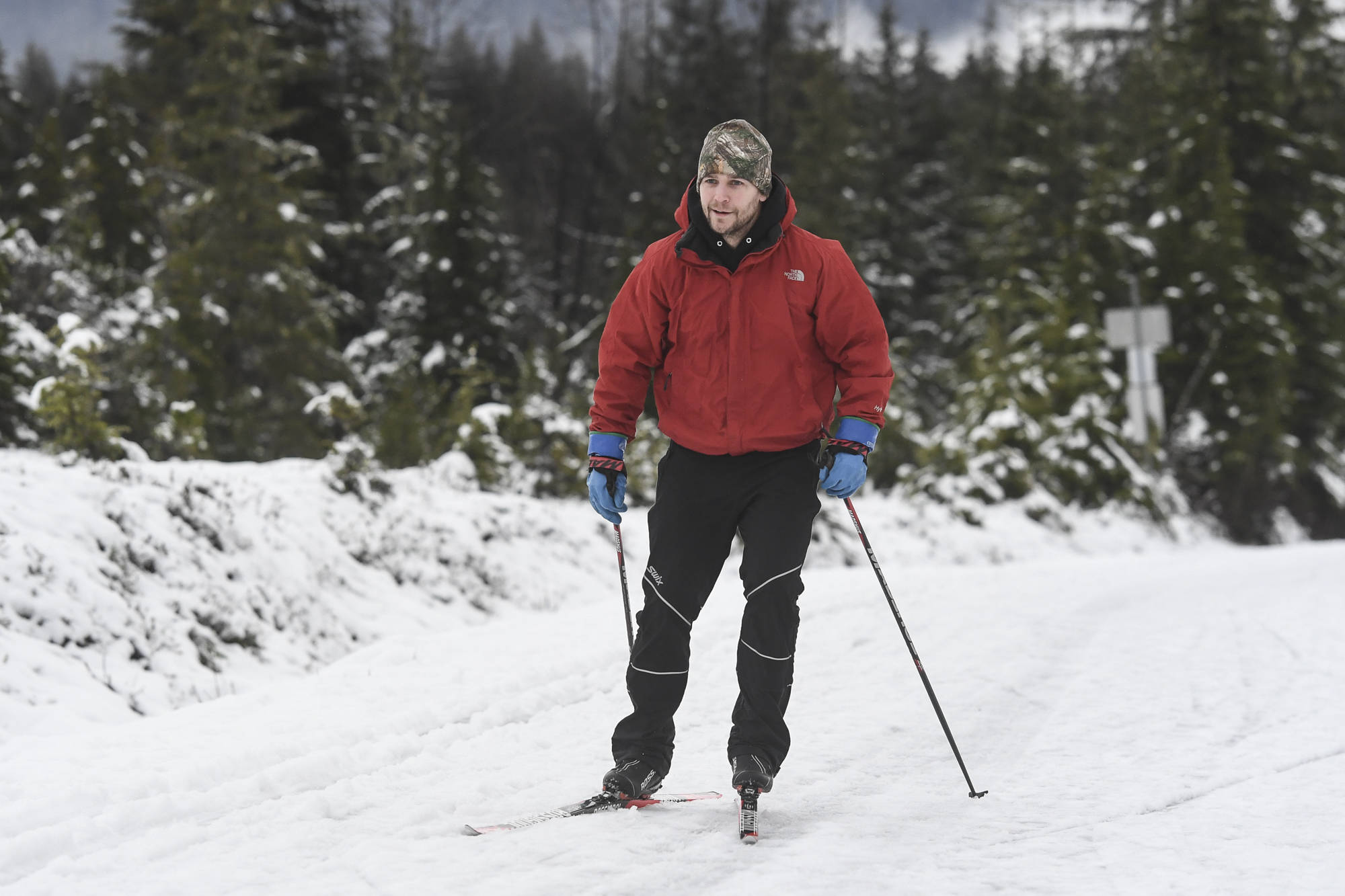A white Christmas isn’t looking especially likely.
A short-term climate outlook released Wednesday by the National Oceanic and Atmospheric Administration shows a strong probability Southeast will experience warmer and wetter conditions to finish out the year.
That could equate to a December snowfall total far below the average. Through the first two weeks of the month, 2.9 inches of snow has fallen at the Juneau International Airport, less than a fifth of the monthly average of 15.6 inches.
“We are unfortunately are not hitting our normals there, or anywhere close to them at all,” said meteorologist Greg Spann of the National Weather Service in Juneau. “It is important to note that there are some differences depending on where you are located in Juneau with how much snow you’re receiving.”
Spann added snowfall totals are highly variable between downtown and the Mendenhall Valley, and even within different parts of the Mendenhall Valley. Almost 10 inches of snowfall has been recorded this month at the NWS Forecast Office on the Back Loop Road, he said.
“The valley is definitely experiencing and getting a little bit more snow than downtown or the airport, but no matter which way you cut it, we’re still below normal,” Spann said.
There’s a 40-50% probability the panhandle will be wetter than normal and 33-40% probability the state will have warmer than normal over the next 8-14 days, according to the climate outlooks created by NOAA’s Climate Prediction Center,
“The winter outlook is probabilistic in nature, meaning that the maps show those areas that are most likely to be warmer or colder than normal, or wetter or drier,” said Mike Halpert, deputy director of the Climate Prediction Center, in a conference call with reporters upon the release of the 2019-20 U.S. winter climate outlook. “However the nature of a probabilistic forecast means that other outcomes are always possible, just less likely.”
The average temperature last month in Juneau was 38.5 degrees. That’s five degrees warmer than normal, according to the National Weather Service.
Additionally, the total precipitation last month of 10 inches was four inches higher than normal, according to the National Weather Service. The climate normal period is taken from records between 1981-2010.
• Contact sports reporter Nolin Ainsworth at 523-2272 or nainsworth@juneauempire.com.

